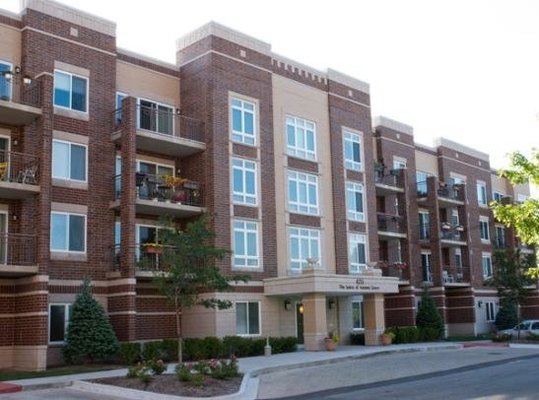Many seniors love how independent living communities reduce unwanted stress, hazards, and fatigue in their lives. Independent living communities take care of housekeeping, yard work and meals while still allowing residents personal space and the dignity of making their own choices. These communities usually provide seniors with an apartment that has a small kitchen, bathroom, living room, and one or more bedrooms. Those who want a small space may even find that some independent living communities offer studio-style apartments. Seniors can invite guests over and enjoy their rooms however they see fit.
Independent living communities often also include the following:
- Numerous opportunities for socializing and exploring new activities
- Easy access to public or community-provided transportation
- Meal plans for community dining as well as kitchens for seniors who like preparing their own meals
- The ability to keep small- and medium-size pets such as dogs and cats
- Housekeeping, laundry and groundskeeping services
- 24-hour staff on-site who can be contacted if a problem arises
For a more detailed look at common amenities, check out our guide to independent living communities.
What Couples Should Know About Independent Living in Chicago,IL
The bustling city of Chicago is located on Lake Michigan in Illinois and is home to 2,700,000 people. The city is mostly known for its abundance of museums, including the Field Museum, the Art Institute of Chicago and the Chicago History Museum, all offering discounted admission for seniors. It’s rated the sixth most walkable city in the nation, making it easy for active adults to navigate the city and complete most errands on foot, it also has a reliable transportation system, which those aged 65 and over can ride for free.
In addition to its many museums, Chicago offers an array of festivals all throughout the year, unique walking tours that allow sightseers to explore the city’s architecture and history as well as dinner cruises on the Chicago River and Lake Michigan. With its many attractions, Chicago may be a good choice for active seniors who are interested in downsizing and enjoying their retirement years to the fullest.
Paying for Independent Living in Chicago, IL
Chicago is a relatively economical city for independent living. On average, independent living costs $1,399 per month, versus the national median of $2,550. This makes the city a good option for seniors who have a limited retirement budget.
The annual cost of living in an independent living community can range anywhere from $12,000-$42,000, depending mostly on the amenities, room type and cost of living in the area. In addition to using personal retirement income, annuities, long-term care insurance, or cashing out an existing life insurance policy, some seniors can use Social Security funds, Supplemental Security Income (SSI) payments granted due to disability or low-income or HUD-provided housing assistance such as vouchers. Another route many seniors choose to fund their independent living stay is renting out or selling their homes that they won’t need once they move or taking advantage of a reverse mortgage.
Our guide provides a more in-depth look at independent living costs and solutions for those who want to learn more.
How to Choose an Independent Living Community
When choosing an independent living community, it’s best to consider many factors, including the community’s proximity to loved ones and medical care, the state of repair that the facility appears to be in, the attitude and efficiency of the staff, the cost of both rent and services, the facility’s pet policy and more.
Comparing multiple communities can help seniors and their families figure out what they value most in an independent living community. During tours of these communities, staff members should be available to answer questions. To help with the touring and comparison process, we’ve included a checklist full of pertinent questions that anyone can download and print for themselves.
Transitioning to Independent Living
Independent living communities, rather than memory care or nursing homes, are often the first place seniors move to when they realize they need a lifestyle change. The necessity of letting some possessions go and the reality of leaving a home and neighborhood after possibly decades of residence there can make transitioning to an independent living community difficult. These communities are often friendly places, but being in a new environment still initially triggers feelings of loneliness in many seniors.
Having a strategy for dealing with the challenges of moving can make the transition to an independent living community a positive experience. We’ve created a downloadable step-by-step guide for tips to making this transition as smooth and enjoyable as possible.




















